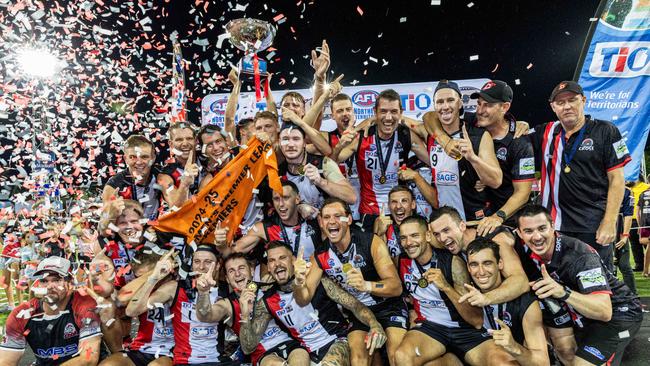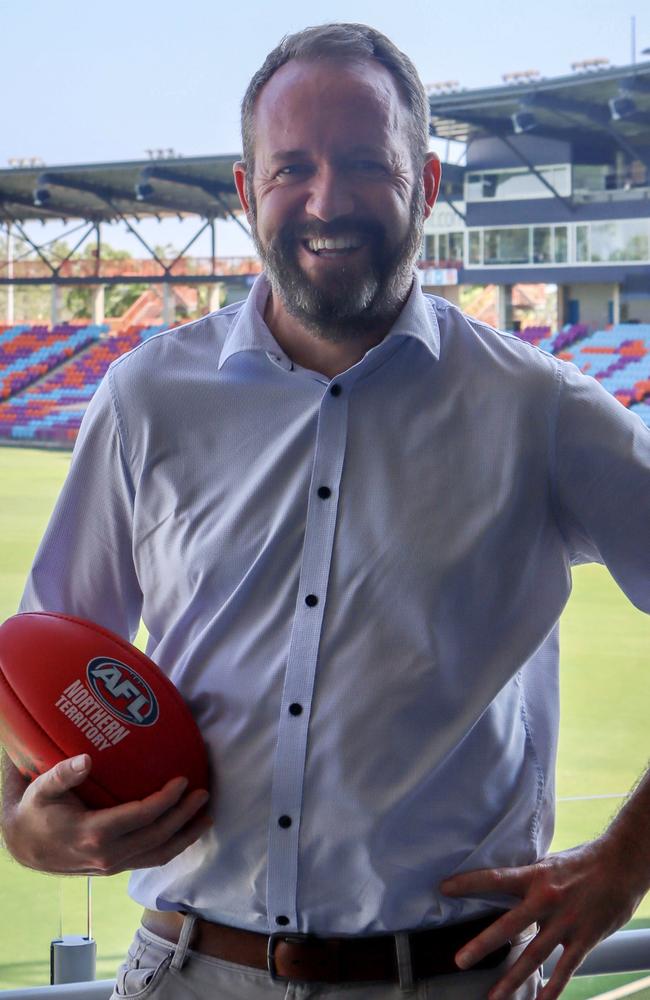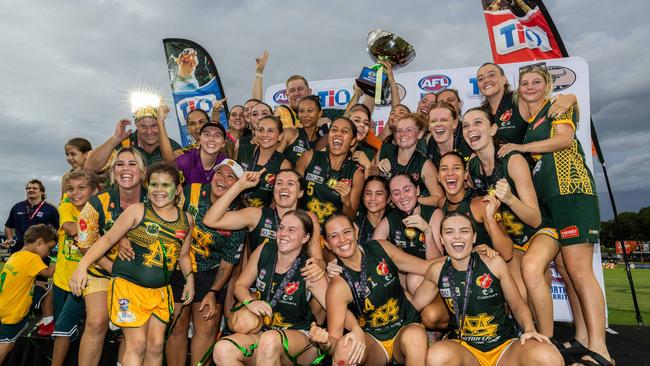AFLNT head Sam Gibson talks growing club disparity in the NTFL
The AFLNT is reviewing the competitive balance of the NTFL following a widening gap between the clubs with the best earning potential and the rest of the field. Read what’s happening.

Northern Territory
Don't miss out on the headlines from Northern Territory. Followed categories will be added to My News.
The AFLNT is carrying out a review into the competitive balance of the NTFL following a widening gap between the clubs with the best earning potential and the rest of the field.
The competitive balance and financial model review aims to ensure the competition and each club can remain successful following growth in the participation numbers.
In the 2024-25 season there were 170 teams playing across 20 divisions from the league’s 12 clubs, however there is a growing divide between the clubs with higher football spend and the rest.
Southern Districts, St Mary’s, Waratah and Nightcliff have featured in the past four men’s finals and each were recorded to have in surplus of $140k in the 2023 financial year on football spending.
In that period the highest football spend was $207,515, while less successful clubs in the period, such as Darwin Buffaloes and Wanderers, have a football spend of less than $60k.
The current model rewards some clubs more than others with the higher spending clubs receiving more subsidies as a result of larger player bases.
As a result of the largely unique situation every Top End club finds themselves in income streams are different, particularly for clubs that don’t have their own home ground.

Head of AFLNT Sam Gibson said the review came off the back of “considerable growth” in recent years with the intention of working with all clubs to ensure they can remain successful.
“This project’s ultimately about future proofing the competition to make sure it remains successful for the next five to 10 years and into the future,” he said.
“The extension of that is ensuring each club can see its next success in whatever form that looks like whether it’s making winning premierships, making finals or otherwise.
“The NTFL is a unique competition, certainly compared to southern competitions, where opportunities for clubs are all very similar whereas here all clubs are different.
“You’ve got clubs that operate venues, clubs that don’t and even one that needs to fly in every week to be able to participate so those operating models are what we need to unpack.
“Some clubs have significant revenue opportunities while some don’t and some clubs have bigger cost bases than others, there’s a whole variety of things we need to understand.”
In recent times AFLNT has worked with the Darwin Buffaloes to help find a home ground in Woodroffe, while another foundation club in Wanderers is still on the hunt.
Other issues of the review include differences between the NTFL and other leagues in terms of the point system.
Most community competitions use a salary cap and point system in tandem to maintain equality, but while the NTFL system protects local talent it does not safeguard former club players.

In tandem with that is the fly-in system that was designed to balance competitiveness and spending, but has led to confusion and problems of its own.
Meanwhile, the subsidies are part of the AFLNT being able to position itself as the most accessible sport in the NT.
The body covers junior umpires, match officials and facilities while assuming match day operations and player insurance allowing clubs as a collective to generate more than $600k in membership fees.
“We’re not looking at changing the current registration model,” Gibson said.
“We’re really proud of the fact we don’t take a cut of the registration fee from any participants, we think it’s really important that our investment is strategically aligned with the growth of the game.
“We’ve also got Australia’s most unique community club in the Tiwi Bombers, whose cost base is a lot higher than other clubs just to participate.
“We’re really aware of the club’s ability to have a social impact on the islands so with them it’s about we ensure we’re working with stakeholders to unlock support for them.”
The review comprises of several phases including meetings with club presidents, consultations with stakeholders and a deep-dive analysis of recommendations.
More Coverage
Originally published as AFLNT head Sam Gibson talks growing club disparity in the NTFL





